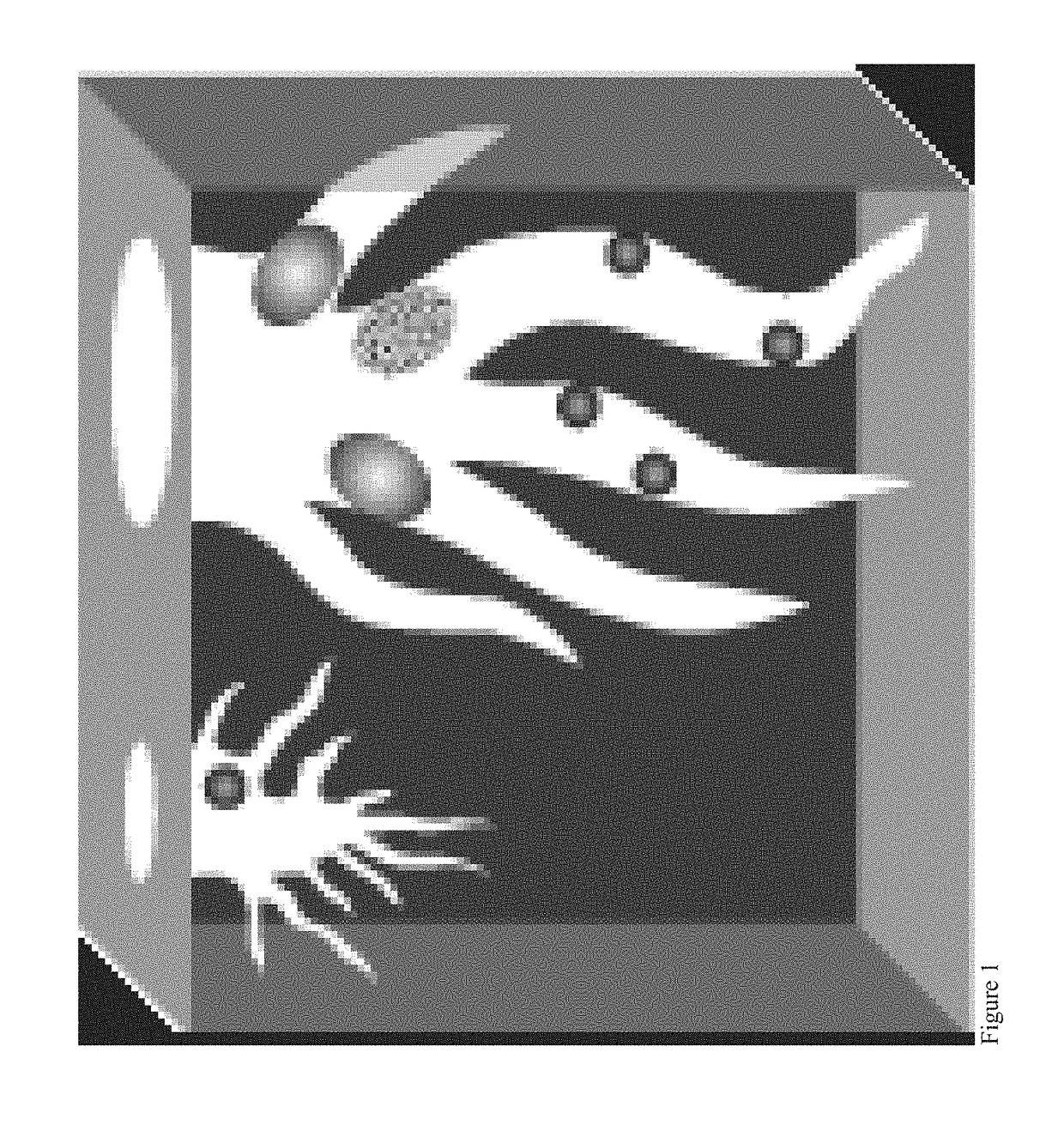Carbon Block/Filtration Bed/Conical Reactor with Fluidized Bed System Allowing Small Sorbent Particles to Regenerate Fluid During Extracorporeal Blood Treatment
a technology of filtration bed and conical reactor, which is applied in the direction of separation with moving sorbents, chemical instruments and processes, and other chemical processes, can solve the problems of limited market entry, no longer available plate dialyzer, and no longer available biologic-dt system. , to achieve the effect of convenient fast reaction kinetics of small particles, easy constrained reactor, and fine structur
- Summary
- Abstract
- Description
- Claims
- Application Information
AI Technical Summary
Benefits of technology
Problems solved by technology
Method used
Image
Examples
experiment 2
[0179]As may be seen in FIG. 33, the fluid volume of the CBFB is not more than 935 mL. The weight steadily increases; the proportions due to powder accumulation and air emission are not known.
[0180]Significant observations in Experiment 2 included:[0181]Change in salt solution from NaCl to RFP-404 had no effect[0182]Change in startup temperature from 42° C. (Experiment 1) to 20° C. (Experiment 2) had no noticeable effect.[0183]CP could be slurry loaded, but larger particles remained in pump tubing for the duration of the experiment.[0184]The ability to successfully slurry load an additional 50 g at t=60 minutes for a total of 100 g and at another 60 g at t=111 minutes for a total of 160 g, with an increase in cloud size and particle carryover to the CBFB, but without any drastic effects.[0185]The ability to operate at 50% greater than design flow rate with only additional particle carryover.[0186]In the event of an “overload,” where the cloud extends into the cylinder, the cylinder ...
experiment 3
ine
[0190]This experiment was primarily designed to test the interface with the NxStage machine. One objective was to simply test overall functionality—would the two systems work together with a significant safety margin.
[0191]In FIG. 38, The box denoted by the red arrow includes a CR followed by a CBFB. The MCH-1000 and Biotherm were simulated by a simple resistance of about 80-120 mmHg. Flow through the CCS was 200 mL / min. Flow through the simulated Biotherm / MCH-1000 was typically about 754 mL / min.
[0192]To test the ability of the NxStage machine to tolerate the CCS with a good safety margin, three tests were performed, which, along with periodic machine starts and stops will explain FIGS. 39, 40 and 41.
[0193]In the first test, an adjustable flow restrictor was placed in the CBFB effluent line. The effects may be seen at t=50 to t=60 in FIG. 40. The NxStage machine did not give any alarms or error indications. The approximate 300 mmHg limit was the operator's comfort limit.
[0194]In ...
PUM
| Property | Measurement | Unit |
|---|---|---|
| particle size | aaaaa | aaaaa |
| surface area | aaaaa | aaaaa |
| molecular weight | aaaaa | aaaaa |
Abstract
Description
Claims
Application Information
 Login to View More
Login to View More - R&D
- Intellectual Property
- Life Sciences
- Materials
- Tech Scout
- Unparalleled Data Quality
- Higher Quality Content
- 60% Fewer Hallucinations
Browse by: Latest US Patents, China's latest patents, Technical Efficacy Thesaurus, Application Domain, Technology Topic, Popular Technical Reports.
© 2025 PatSnap. All rights reserved.Legal|Privacy policy|Modern Slavery Act Transparency Statement|Sitemap|About US| Contact US: help@patsnap.com



